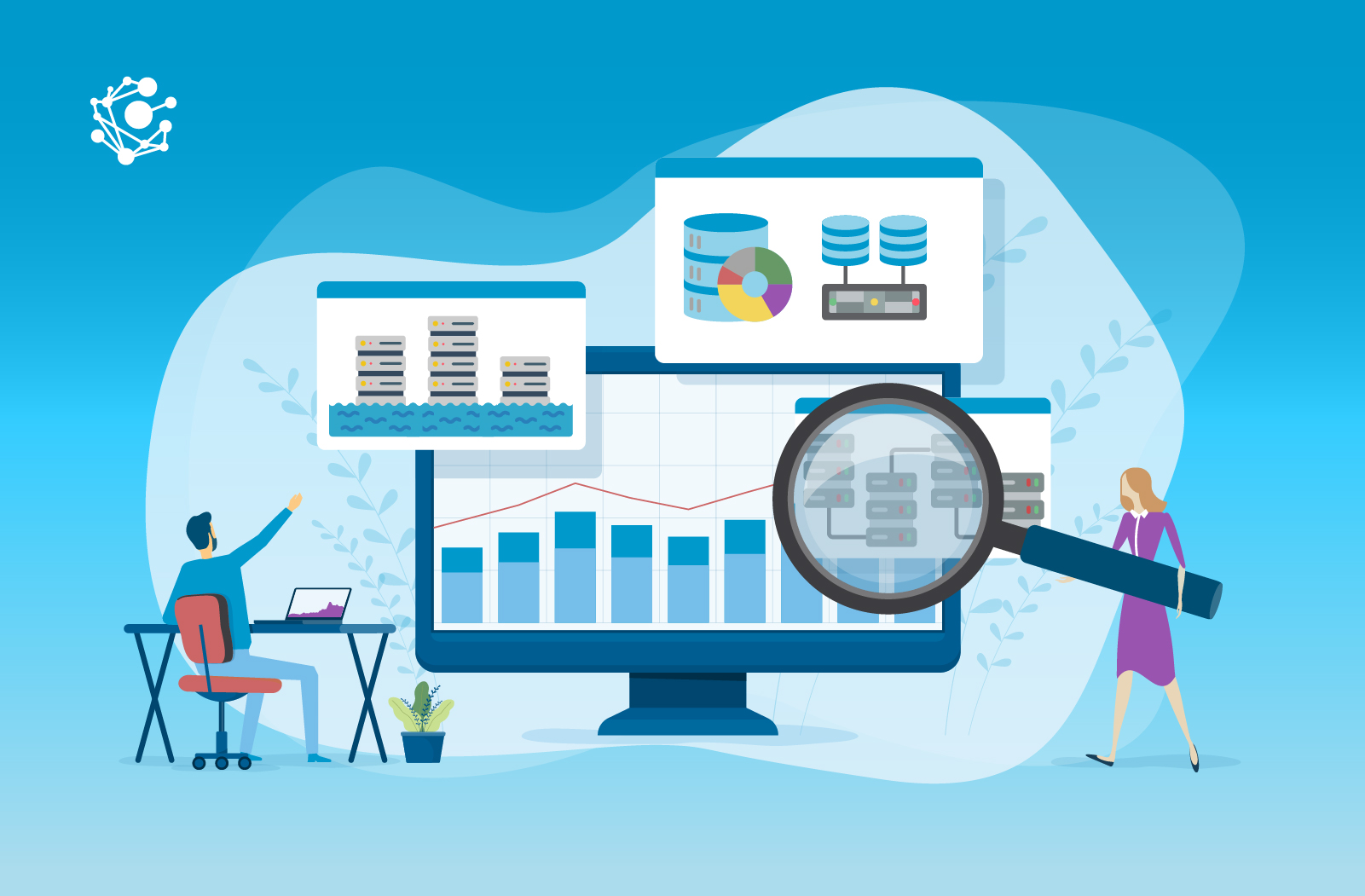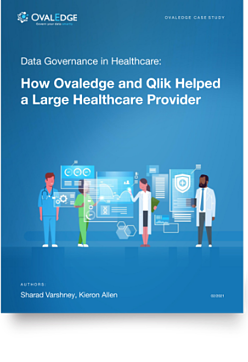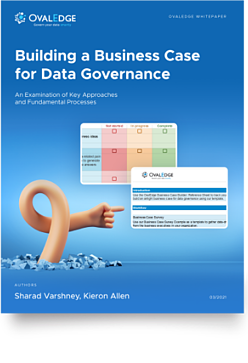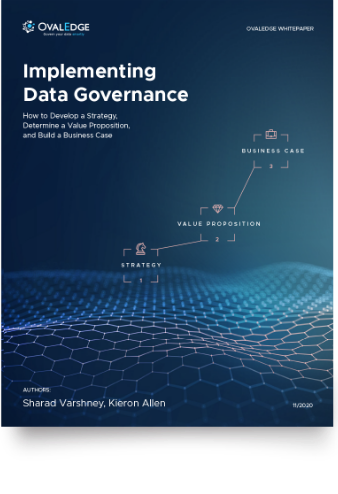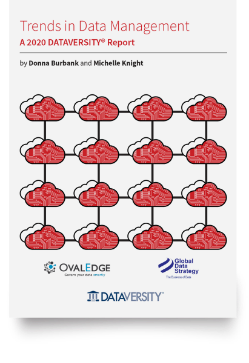Table of Contents
Data Discovery: What it is, Why it’s Important for Data Governance
An essential business intelligence (BI) process, effective data discovery provisions make an organization’s data easy to locate, regardless of where it’s stored. But before we look into the benefits of data discovery, let’s imagine a scenario where these important processes are ignored.
In most organizations, data is neither centrally located nor universally accessible. You’ll find multiple, dispersed databases and systems with access controls limited to specific users from specific locations.
These chaotic practices make data hard to find and complicated to access with often only department heads knowing where specific information is stored.
As a result, retrieving a particular data set can take weeks or even months of painstaking research.
But, with an effective data discovery model in place, the same data can be accessed with a few clicks of a mouse or, at most, an hour or two of research.
What is Data Discovery?
Data discovery is a vital part of data governance involving the transparency of dispersed and complex data sources, access to these sources, and the collection of data from these sources.
Adequate data discovery provisions should be an essential part of any organization’s data governance strategy.
Need help convincing stakeholders of the importance of data governance?Download our free Data Governance Business Case Builder
Why is Data Discovery Important for Business?
As we’ve already discussed, data discovery platforms make the process of finding, accessing, and collaborating on data more efficient, and this has several benefits to your business.
Essentially, with this infrastructure in place, you’ll slash the time it takes to find and utilize data. As with so many other areas of business operations, time spent on a task equates to money spent paying staff to perform it, and cutting this unnecessary search time will save your company money.
Do More with Data
Data discovery provisions also enable specialized staff—data engineers and data scientists—to do more with the information they have at their fingertips instead of wasting time trawling through databases. They can focus on developing predictive models that will enable your organization to grow.
Utilizing data efficiently will help to establish your company’s leadership position.
In this data-driven digital workspace, your data team can focus on collaborative projects and innovate more quickly.
Utilizing data efficiently will help to establish your company’s leadership position and improve its standing in your industry. In this data-driven digital workspace, your data team can focus on collaborative projects and innovate more quickly.
The problem is, developing effective data discovery tools is a long, laborious, and expensive process. Your best option is to find a professional, dedicated provider that can adapt existing technology solutions to meet your data discovery needs quickly, and cost-effectively.
And that’s where we step in.
What are the Benefits of Data Discovery?
Data discovery platforms streamline the process of accessing data. By presenting users with a method to find and collaborate on data from multiple sources, an organization can drastically increase its efficiency.
Good data discovery processes also make data easier to understand because they ensure that all available information is categorized correctly. With these processes in place, users aren’t required to trawl through reams of data in search of specific content, a task that can be overwhelming and confusing, especially for larger enterprises.
Data discovery systems ensure data is searchable. Just as you might type a search term into Google, a well-developed data discovery model enables you to input keywords and retrieve the data you need—regardless of its original location.
Finally, these tools enable teams to collaborate. Because access is centralized, anyone can find and work with a data set, whether or not they were responsible for inputting it.
Data Discovery Use Case Scenario
Data discovery processes are used predominantly by data scientists and data engineers. With data discovery initiatives in place, these data professionals can build systems that will benefit other end users in an organization.
Without these processes, an organization’s data team can’t access existing information efficiently or work on it collaboratively.
Related: How Chief Data Officers overcome three key challenges they face
Making data searchable
Here’s a scenario. An employee in the accounts department needs a series of purchase orders and other historical financial data from the purchasing team.
They aren’t clear on the exact information they need but want to build up an idea of how and why the purchasing budget has fluctuated over the previous decade.
There is a lot of back and forth between the two departments, and information that should be accessed easily takes months to find and process. That’s because without a collaborative, searchable data catalog it’s very hard for the accounts team to specify what they are looking for and for the purchasing team to find it.
How to implement Data Discovery with the right tools?
Businesses that wish to implement data discovery effectively face two key challenges.
Firstly, implementing a Google-like search facility when creating a data discovery platform is extremely difficult. It might be easy for the developer of a search engine to create a search function like this because all the information they require is publicly available and, importantly, in one place.
In this scenario, there is no need to worry about data security or personally identifiable information (PII).
But, when it comes to replicating this in a business context there are some serious stumbling blocks. You can’t simply put all of an organization’s data in one place because some of it could well be confidential.
Secondly, inputting vast amounts of data that exists in multiple channels into one platform requires a massive amount of infrastructure.
Updating a centralized platform with data in real time—because new data is constantly being processed and acquired—is technically difficult and expensive.
These two factors make it challenging, if not impossible, for companies to create independent data discovery platforms.
Related: Data Catalog: The Ultimate Guide
The OvalEdge Solution
So how do we overcome these challenges? Firstly, using advanced AI techniques, we identify PII and other sensitive information and protect it so this data isn’t made publicly available.
We identify PII and other sensitive information and protect it. We don’t replicate raw data, but instead, update metadata about that information.
Secondly, we don’t replicate raw data, but instead, update metadata about that information. This keeps storage to a minimum, negating the need for major infrastructure.
We continually crawl the real-time metadata uploaded to your platform ensuring everything is up to date at all times, extending available data as and when users collaborate and share tribal knowledge.
With our end-to-end data governance suite, you can quickly create a searchable data catalog where data engineers and scientists can access and collaborate on information efficiently.
Learn more about our easy-to-use discovery platform and data governance suite. Get in touch today and find out how OvalEdge can streamline your data governance strategy.
What you should do now
|

